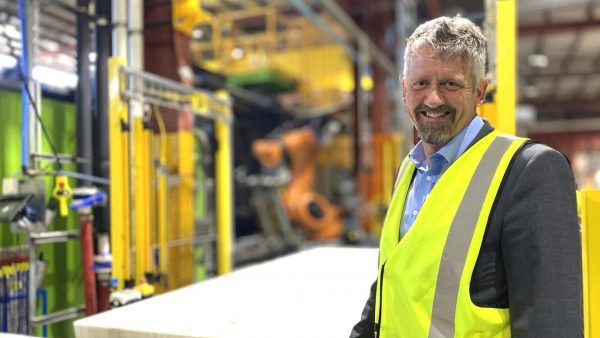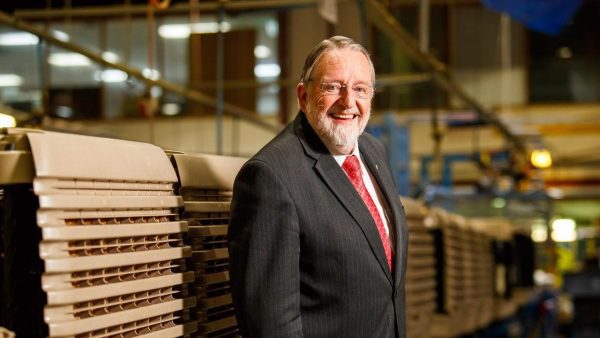Seeley International says it’s time to refocus on local manufacturing to capitalise on growing demand for Australian made products.

Seeley International managing director Jon Seeley at the Lonsdale facility
COVID-19 has presented Australia with a “once-in-a-lifetime opportunity” to refocus on the benefits of manufacturing at home, says the leader of the one of nation’s leading industrial businesses.
This month, Lonsdale-based Seeley International will manufacture 70 per cent more airconditioning units than originally anticipated. It follows record winter production of gas heaters at its Albury facility in NSW on the back of strong demand.

Frank Seeley established Seeley International in 1972
“At this point, there are strong indications that there is no abating of demand,” managing director Jon Seeley said.
“There is a lot of support to source and buy local and there is momentum around building Australia’s sovereign capability.”
Customers are more actively seeking out locally manufactured products, particularly as international supply chains become riskier or more unreliable with the impact of COVID and other trade issues. However, the current situation has brought new challenges.
“What we are finding is that demand for workers is outstripping our ability to source them,” he said.
Since mid-2020, Seeley International observed a stark increase in the difficulty of attracting suitable candidates for casual or permanent positions.
Labour hire companies are attributing this, at least in part, to increased JobSeeker payments. Wait times on finding casual staff for seasonal peaks have increased from one or two days pre-COVID-19 to weeks without a suitable candidate.
Another 20 permanent positions remained unfilled while engineering positions in both manufacturing locations are very difficult to recruit.
“To me it’s important that we lift the understanding of the benefits of manufacturing as a great career for people,” Mr Seeley said.
“In the past we have emphasised that everyone must go to universities, but we need to, like Germany, regard trade qualifications highly too, so we have the necessary skills base to make things here.”
The kind of experience being offered can give valuable context to future studies and careers and can strengthen prospects of success in a competitive jobs market.
The manufacturer did not qualify for the JobKeeper wage subsidy program so all 500 employees took a temporary pay cut to tide over the COVID-19 situation and save jobs.
Jon’s father Frank Seeley, 79, established the family-owned business in 1972 and is currently chairman. He is a strong advocate of local manufacturing and wants to see more of it.
“As governments become increasingly focused on issues like emissions reduction and keeping communities healthy, the role of our industry will become even more critical,” he said. “Seeley is constantly looking to attract skilled and dedicated employees to deliver on its commitment to manufacturing innovative, high quality and highly energy efficient products … in Australia.”
Seeley sells about 60,000 systems a year through 350 dealers and exports to 120 countries.
Source: The Advertiser